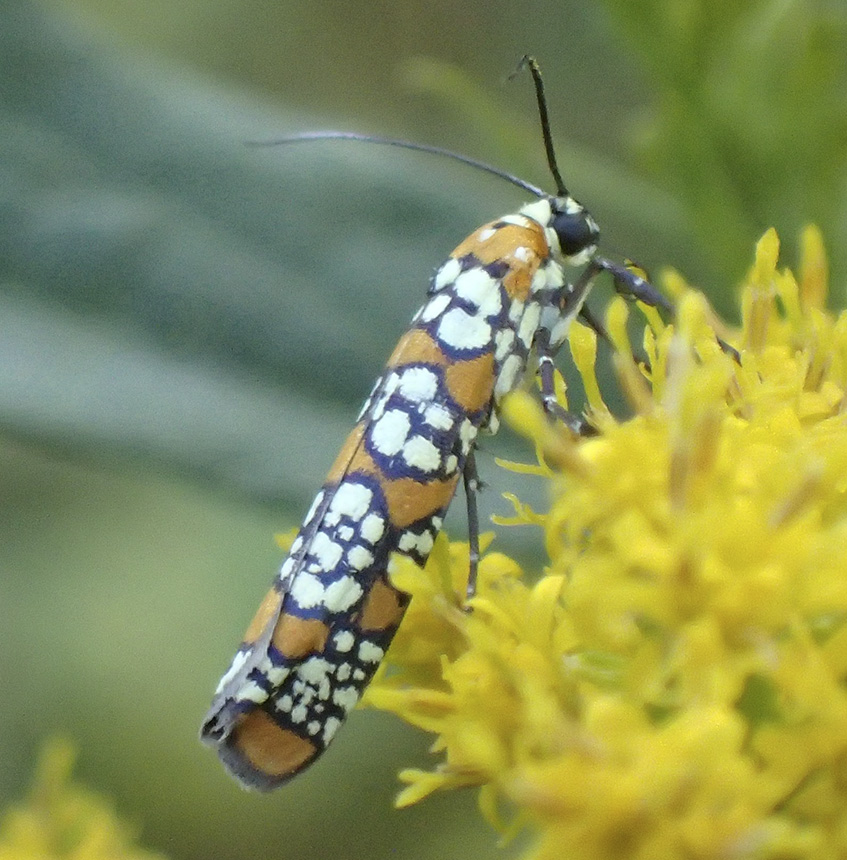
Ailanthus webworm moth (Atteva aurea) is a small, native, ermine moth with a colorful appearance and an unusual history. It was formerly native to the tropical Americas, including southern Florida, Central America, and the Caribbean, where its larval hosts were paradise tree (Simarouba glauca) and Simarouba amara. In 1784, the Chinese tree of heaven was introduced into Philadelphia. The tree was fast growing and spread quickly. When it reached Florida in the 1850s, ailanthus webworm moth found it to be an acceptable host. The moths then began moving north to wherever their new host was found.
Ailanthus webworm now occurs throughout the United States east of the Great Plains, and in southern Quebec and Ontario Canada. It is common in the eastern United States, uncommon but increasing in Minnesota. Tree of heaven, which is often planted as an ornamental in urban areas, remains the primary larval host, but larvae have also been found on avocado, Emory’s crucifixion-thorn, and sumac. Adults are found visiting flowers from May to October in Minnesota. They can’t survive northern winters, but they recolonize the northern range of tree of heaven every year. Although its range has recently expanded greatly, ailanthus webworm moth is not considered invasive by any state or province.
Adults are 7⁄16″ to ⅝″ in length and have a 11⁄16″ to 13⁄16″ wingspan. The forewings are reddish-orange with four broad black bands filled with white or pale yellow spots of varying size. The bright pattern is thought to be a warning to predators of their unpalatability. The black areas have bluish-purple reflections. The hindwings are mostly translucent with black on the margins and black veins.
http://www.minnesotaseasons.com/Insects/ailanthus_webworm_moth.html
